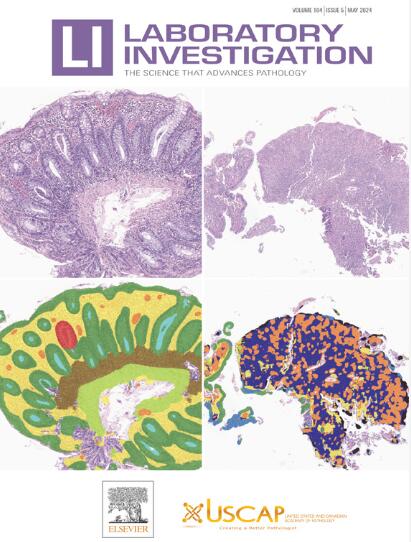Lacking TRPA1 Cation Channel Impairs Primary Closure of a Stromal Incision Injury in a Mouse Cornea
IF 4.2
2区 医学
Q1 MEDICINE, RESEARCH & EXPERIMENTAL
引用次数: 0
Abstract
The cornea is a highly sensory, innervated, avascular tissue that consists of epithelium, keratocytes, endothelium, and an extracellular matrix. We evaluated the effects of gene knockout (KO) of the TRPA1, a membrane cation channel potentially activated by various external stimuli, on the wound-healing process in corneal stroma following an incision injury in mice. TRPA1 protein was detected markedly in the corneal epithelium and cells in the stroma in a healthy, uninjured wild-type cornea. Deletion of TRPA1 gene function delayed wound closure of a full-thickness incision injury in the corneal stroma. Peak of the appearance of Sox10-positive (Schwann cell marker) and Sox2- or p75-expressing (both repair-type Schwann cell markers) cells in the healing stroma was at day 2 postincision injury in a wild-type mouse, but was delayed in a TRPA1-KO mouse during the healing process. Expression of TGFβ1 mRNA was suppressed, in association with a reduction in p-Smad3 expression in stromal cells, by TRPA1 gene deletion. We also observed that the loss of TRPA1 suppressed the appearance of myofibroblasts and expression of Col1a1 and fibronectin in the healing stroma. In vitro gel culture study showed that chemical TRPA1 inhibition attenuated TGFβ-induced fibroblast contractility. These results indicate that TRPA1 is involved in the process of corneal stromal wound healing in response to tissue laceration in mice. The phenotype was associated with the attenuation of the generation of repair Schwann cells, TGFβ signaling in stromal cells, keratocyte-myofibroblast transformation, and collagen-type I expression.
缺乏TRPA1阳离子通道损害小鼠角膜间质切口损伤的初级闭合。
角膜是一种高度感觉、神经支配、无血管的组织,由上皮、角化细胞、内皮和细胞外基质组成。我们评估了瞬时受体电位锚蛋白1 (TRPA1)基因敲除对小鼠切口损伤后角膜基质伤口愈合过程的影响,TRPA1是一种可能被各种外部刺激激活的膜阳离子通道。正常野生型(WT)角膜上皮细胞和基质细胞中可见TRPA1蛋白。TRPA1基因功能缺失延迟角膜间质全层切口损伤创面愈合。愈合基质中Sox10(雪旺细胞标记物)阳性和Sox2-或p75-(均为修复型雪旺细胞标记物)表达细胞出现的峰值在WT小鼠切口损伤后第2天,而在trpa1敲除(KO)小鼠愈合过程中延迟出现。TRPA1基因缺失可抑制基质细胞中tgf - β1 mRNA的表达,并降低p-Smad3的表达。我们还观察到TRPA1的缺失抑制了愈合基质中肌成纤维细胞的出现和胶原Ia1和纤维连接蛋白的表达。体外凝胶培养研究表明,化学抑制TRPA1可减弱tgf β诱导的成纤维细胞收缩性。这些结果表明,TRPA1参与了小鼠组织撕裂伤后角膜间质创面愈合的过程。表型与修复雪旺细胞的产生、基质细胞中TGFβ信号传导、角化细胞-肌成纤维细胞转化和I型胶原表达的衰减有关。(241字)。
本文章由计算机程序翻译,如有差异,请以英文原文为准。
求助全文
约1分钟内获得全文
求助全文
来源期刊

Laboratory Investigation
医学-病理学
CiteScore
8.30
自引率
0.00%
发文量
125
审稿时长
2 months
期刊介绍:
Laboratory Investigation is an international journal owned by the United States and Canadian Academy of Pathology. Laboratory Investigation offers prompt publication of high-quality original research in all biomedical disciplines relating to the understanding of human disease and the application of new methods to the diagnosis of disease. Both human and experimental studies are welcome.
 求助内容:
求助内容: 应助结果提醒方式:
应助结果提醒方式:


